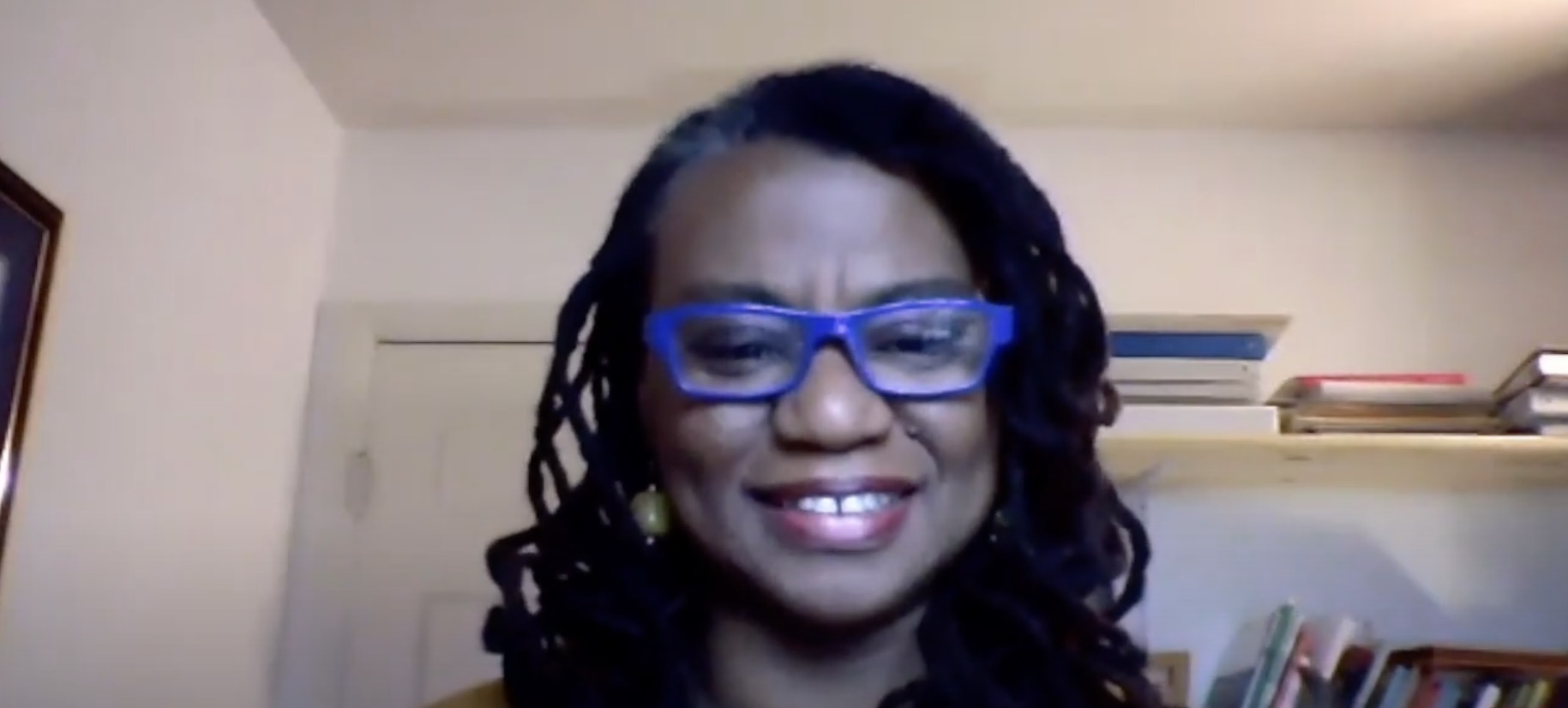The University of the District of Columbia (UDC) television studios, UDCtv, provides the Washington, DC area with programming geared to foster health, political and environmental awareness. Dr. Katherine Marshall Woods hosts this UDCtv show entitled, “A Healthy Mind” featuring guests from a myriad of professions lending information to promote healthy living and lifestyles. Entries entitled: “A Healthy Mind” share these interviews.

On August 17th, 2020, Dr. Michelle Chatman, was invited onto the show to discuss the importance and tools needed to experience mindfulness. In this episode Dr. Chatman explains what mindfulness is and how essential it is to exercise daily. Dr. Chatman is an assistant professor in the College of Arts and Sciences at the University of the District of Columbia, where she leads the college mindfulness initiatives at UDC. She also researches black-community well-being, african spiritually, racial socialization, liberated teaching, youth violence prevention as well as mindfulness.
. . . . .
Dr. Marshall Woods: “Hello, my name is Dr. Katherine Marshall Woods, your host for this episode of A Healthy Mind. The purpose of this show is to educate and inform the public regarding mental health, from emotional disorders to social policies that affect healthy minds.”
“According to the Mayo Clinic, mindfulness is a type of meditation in which one focus on being intensely aware of what one’s sensing and feelings in the moment, without interpretation or judgment. One can perform numerous types of mindful activities. Some to include practicing useful breathing methods, guided imagery and others, which influences one’s stability to remain present in the moment and in turn reduce stress.”
“Joining me today to talk about mindfulness, and how one can reduce stress in one’s life, especially now, is Dr. Chatman, Assistant Professor in the College of Arts and Sciences at UDC; she leads the college mindfulness initiatives there. I’d like to welcome Dr. Chatman. Dr. Chatman thank you so much for coming on today.”
Dr. Chatman: “Thank you so much for having me.”
Dr. Marshall Woods: “Why don’t you tell us a little bit more about your professional life and how mindfulness became apart of your area of focus.”
Dr. Chatman: “Absolutely, I am an Assistant Professor of College of Arts and Sciences at UDC, as you said. I teach in our Crime Justice and Securities Studies program. I’m trained as an anthropologist and we examine culture in all aspects of the lived experiences. And, so maybe about 5 or 6 years ago, I began incorporating contemplative approaches which are introspective, reflective exercises, into my instruction to help students learn, to help them become more present and just to really cultivate a different kind of classroom community, if you will. Mindfulness we can also think of as a contemplative practice, because, it promotes first person awareness, awareness of ourselves, and also awareness of what’s going on around us. And, this has been really useful, not only for student but also for faculty because we carry a lot of stress and anxiety. Many of our students at UDC work full time, their raising families, so when they come to classes at 5:30 they’ve left work day and other obligations, and sometimes they’re just not quite ready to engage as we would have them do as learners. So, taking a few moments to breath, to settle in, to pay attention to what’s going on internally, has really made a difference in the way they learn, and the way I teach.”
Dr. Marshall Woods: “I can imagine that. And, the first thing that comes to mind is are these mindfulness activities implemented in a classroom setting or are the students and staff encouraged to access them in another way campus wide? How does this work?”
Dr. Chatman: “(Laughs) Well yes, some of the practices are implemented in a classroom setting, perhaps in the beginning of class or sometimes at the end I have faculty, colleagues, who have their students do a reflective writing exercise in a mindful kind of way. We also have a weekly mindfulness activity, Mindful Monday, on campus where we convene, used to, in our wellness center and engage in different practices; like visualization, body scans, breathing practices, love and kindness meditations. Some of those exercises have moved into the virtual space now, as everything else so, it’s both. I’ve also done professional development sessions for our faculty and staff, so the movement is really growing at our institution, and we’re just one. Lots of schools, colleges, universities, and work places, corporations are using mindfulness now to support well being.”
Dr. Marshall Woods: “So you’ve mentioned numerous types of activities one can do to be, practice mindfulness. Can you tell us a little bit about why these activities are successful?”
Dr. Chatman: “Absolutely, so they’re so successful because when we are under stress and anxiety, actually happening in our body is we’re being flooded with hormones that keep us stressed, and not feeling well, and not being fully present or available. When we engage in the act of mindfulness, paying attention to our breathing, being in the moment, without judgment, we give our bodies a chance to slow down. We retrain our brains and how to respond to stimuli that might be stressful, that might be uncomfortable; and we’re able to regulate ourselves emotionally. I favor mindfulness because it’s a portable practice, you can do it anytime, you can combine it with other well being practices that you might be doing like, drawing, or writing, or taking a walk, you can incorporate mindfulness into those exercises.”
Visit https://youtu.be/IzW5-V12snA to view Dr. Chatman continue to share regarding mindfulness techniques.

